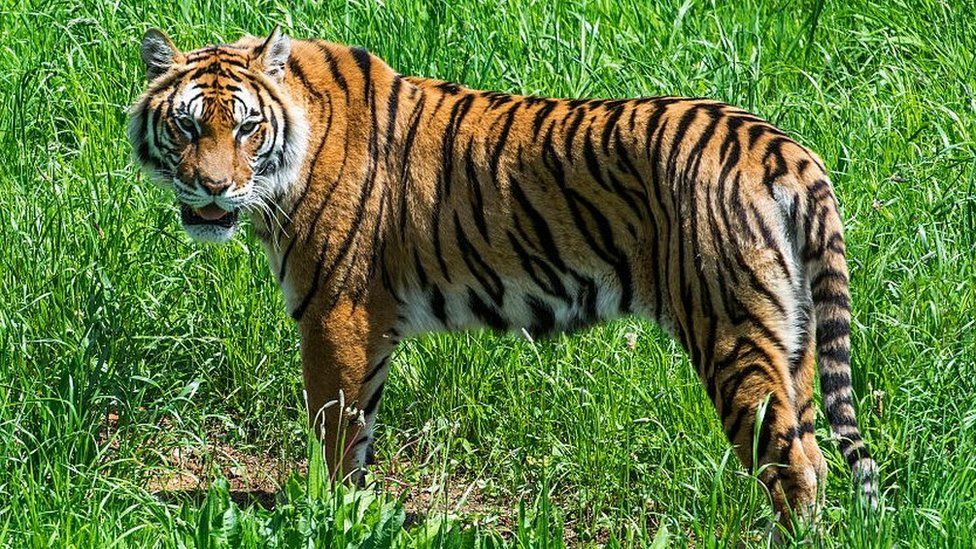
India and Bhutan have reported a marked increase in their wild tiger populations, according to new figures released separately by both countries.
India recorded an average total of 3,682 tigers – making it the home of 75% of the world’s wild tigers, the minister of state for forest, environment and climate change said.
Separately, Bhutan recorded 131 tigers – up 27% from its last count in 2015.
The new figures coincide with International Tiger Day.
In India, the rise in its tiger population amounts to an annual increase of 6%, the environment ministry said.
The population growth is a major conservation success for India, which saw its tiger population plummeting to less than 2,000 in the 1970s due to rampant poaching and loss of habitat.
“India’s exemplary efforts in tiger conservation and the increase in tiger numbers is not just a statistic but a testament to the determination and commitment of the nation,” union minister of forest, environment and climate change Bhupender Yadav said.
In the tiny Himalayan kingdom of Bhutan, the growth in the number of tigers was also celebrated.
“This is a significant achievement and an indication of a very healthy ecosystem,” said Chimi Rinzin, Country Director of WWF-Bhutan.
The Bhutan tiger population survey found evidence of Tigers breeding at different altitudes in the country, suggesting the kingdom could help regional populations recover.
The news in both Bhutan and India has been welcomed as the world continues to grapple with the increasing loss of species due to issues such as climate change.
As a top predator, tigers are considered essential for preserving the complex systems that underpin the natural world.
However, they are an endangered species. According to WWF statistics, the global wild tiger population has dropped by around 95% over the past century.
The loss of habitat due to human habitation and the illegal wildlife trade are among factors responsible for the decline.
As well as Bhutan and India, Nepal has also made significant strides, doubling its tiger population in the past decade.
However, there have been concerns about the growth in tiger attacks in areas where conservation efforts are taking place.
In India, as more tigers compete for the same resources, some of them are venturing outside protected nature reserves looking for food. This can bring them into conflict with people living in nearby villages.
More than 100 people were killed in tiger attacks in India between 2019 and 2021, according to government statistics.
Similar fears exist in Bhutan.
“If tigers are to keep thriving, human-tiger conflict must continue to be addressed,” Bhutan’s national tiger survey report and the WWF said
“Increased conflict results in decreased tolerance for tigers and poses a significant threat to both local people and tigers themselves,” they said.
While Stuart Chapman, who leads the WWF’s tiger preservation initiative, acknowledged that the increase in tiger populations can lead to intensifying challenges, he added: “Bhutan is perfectly positioned to be a global champion for approaches that support coexistence between tigers and people.”



